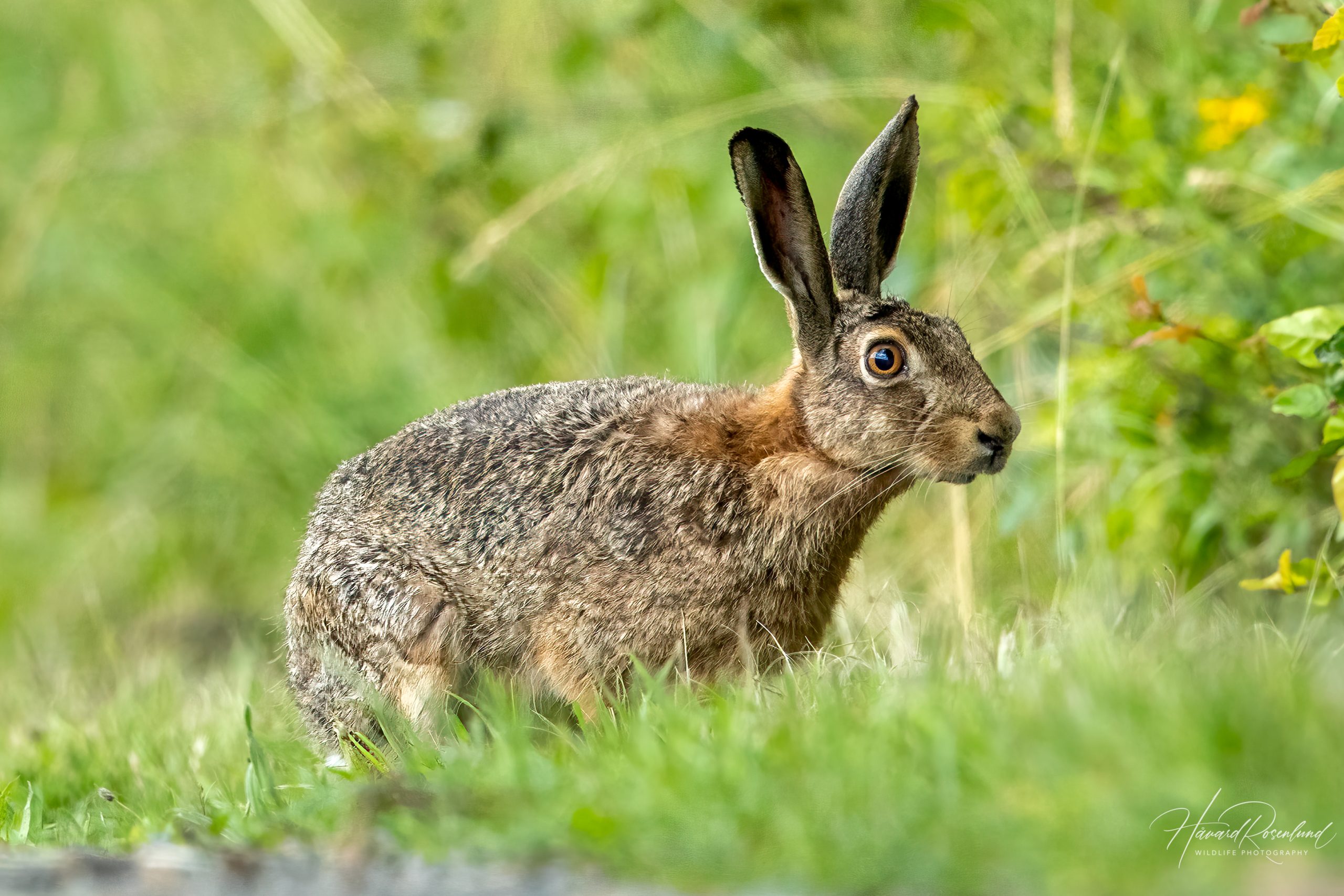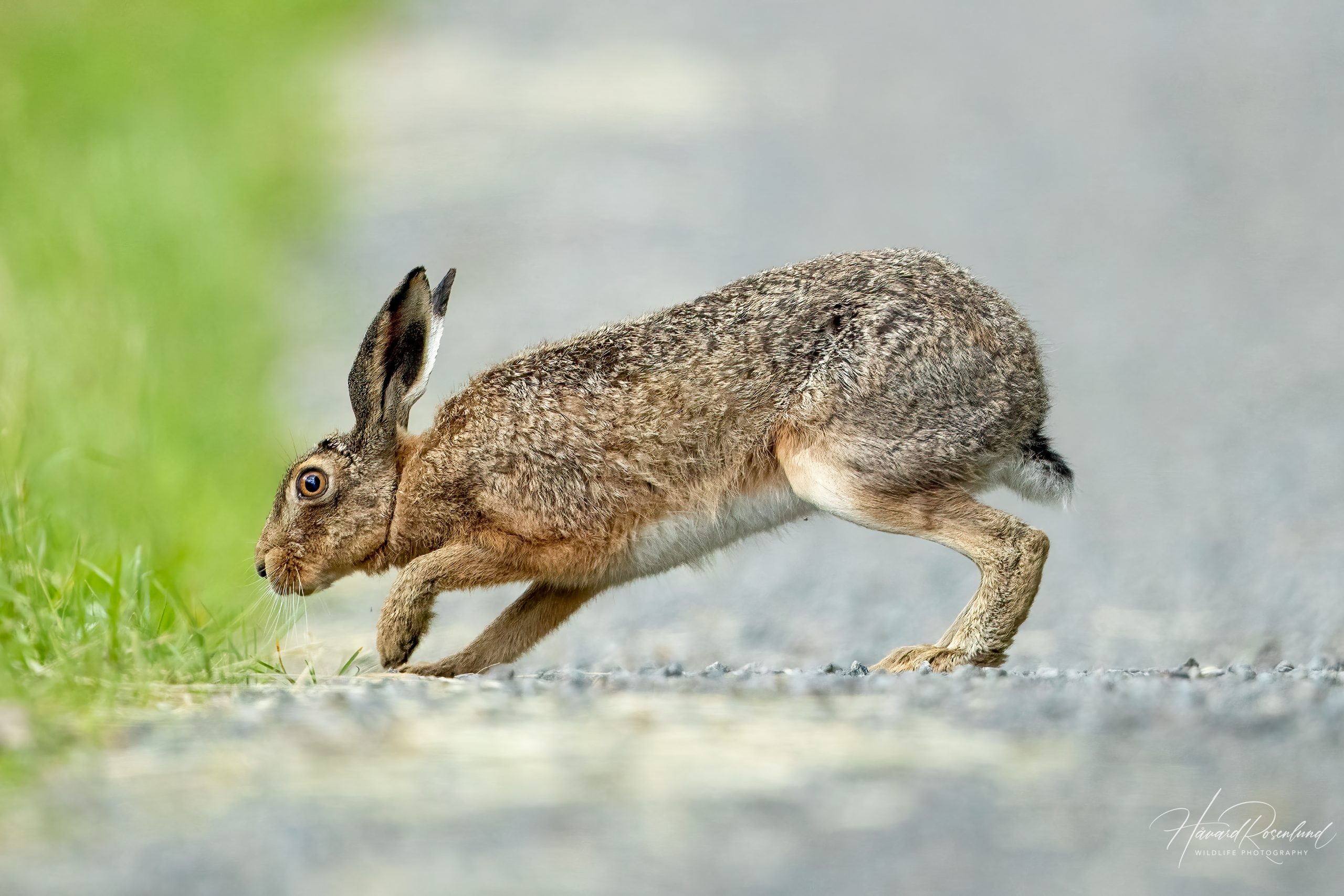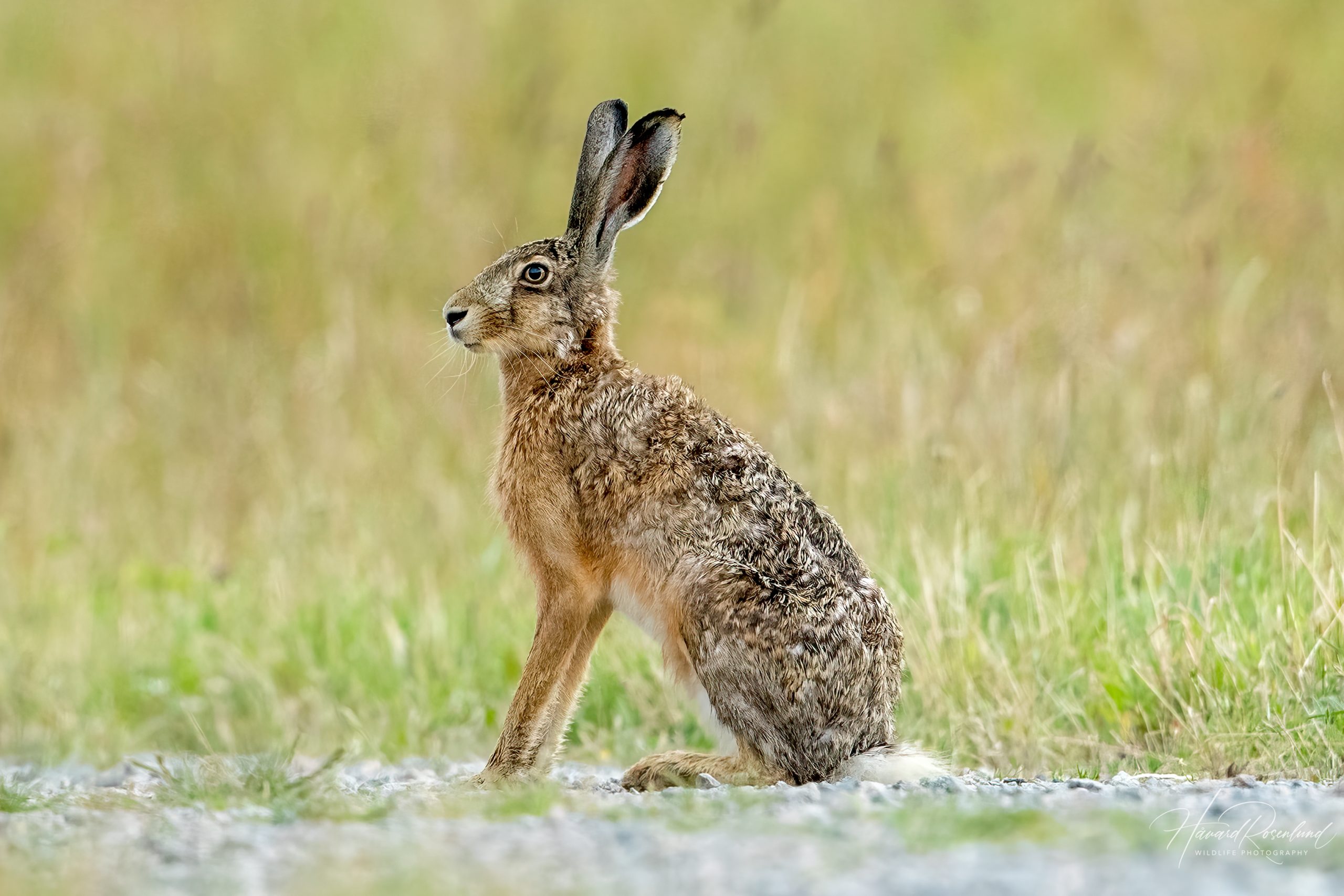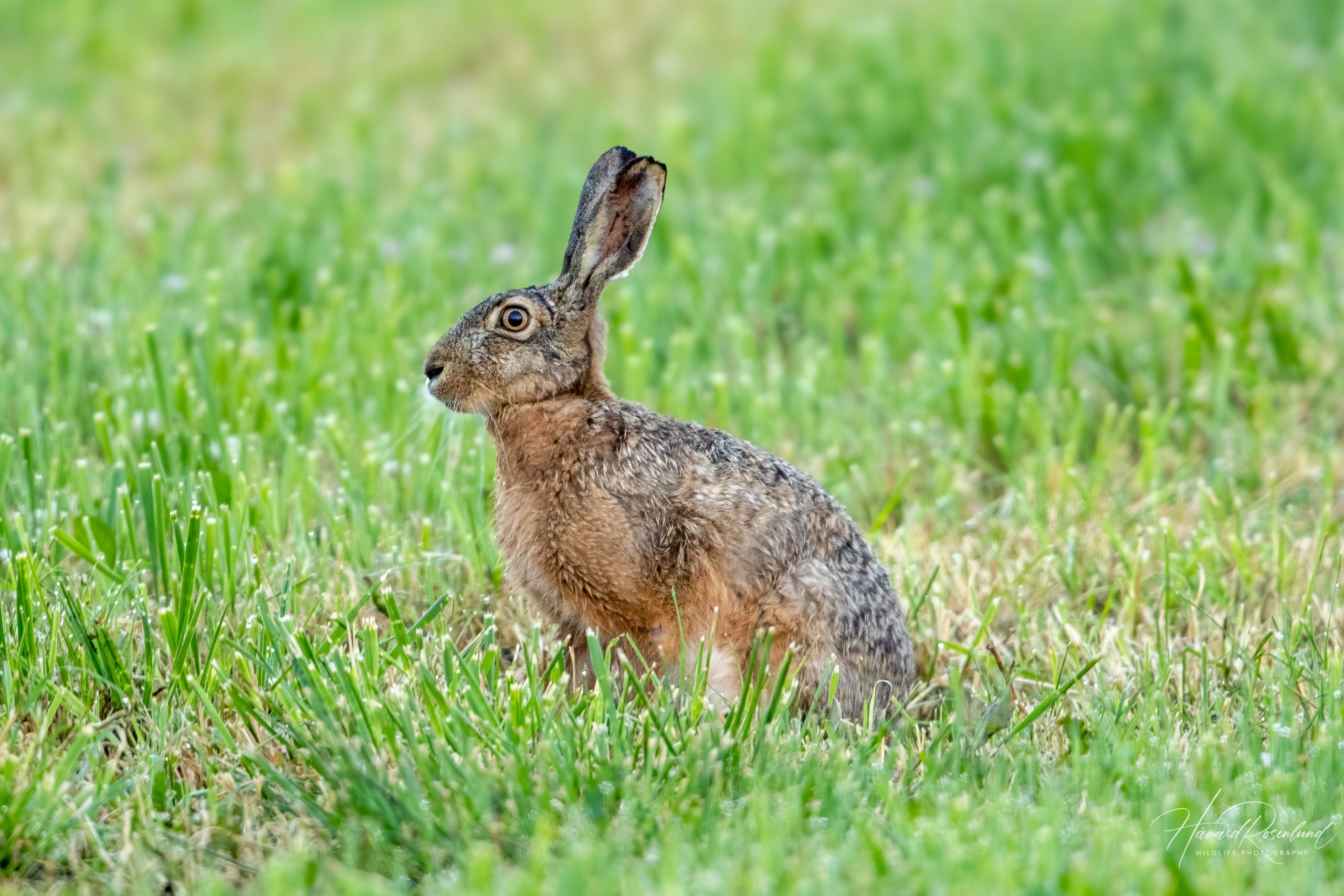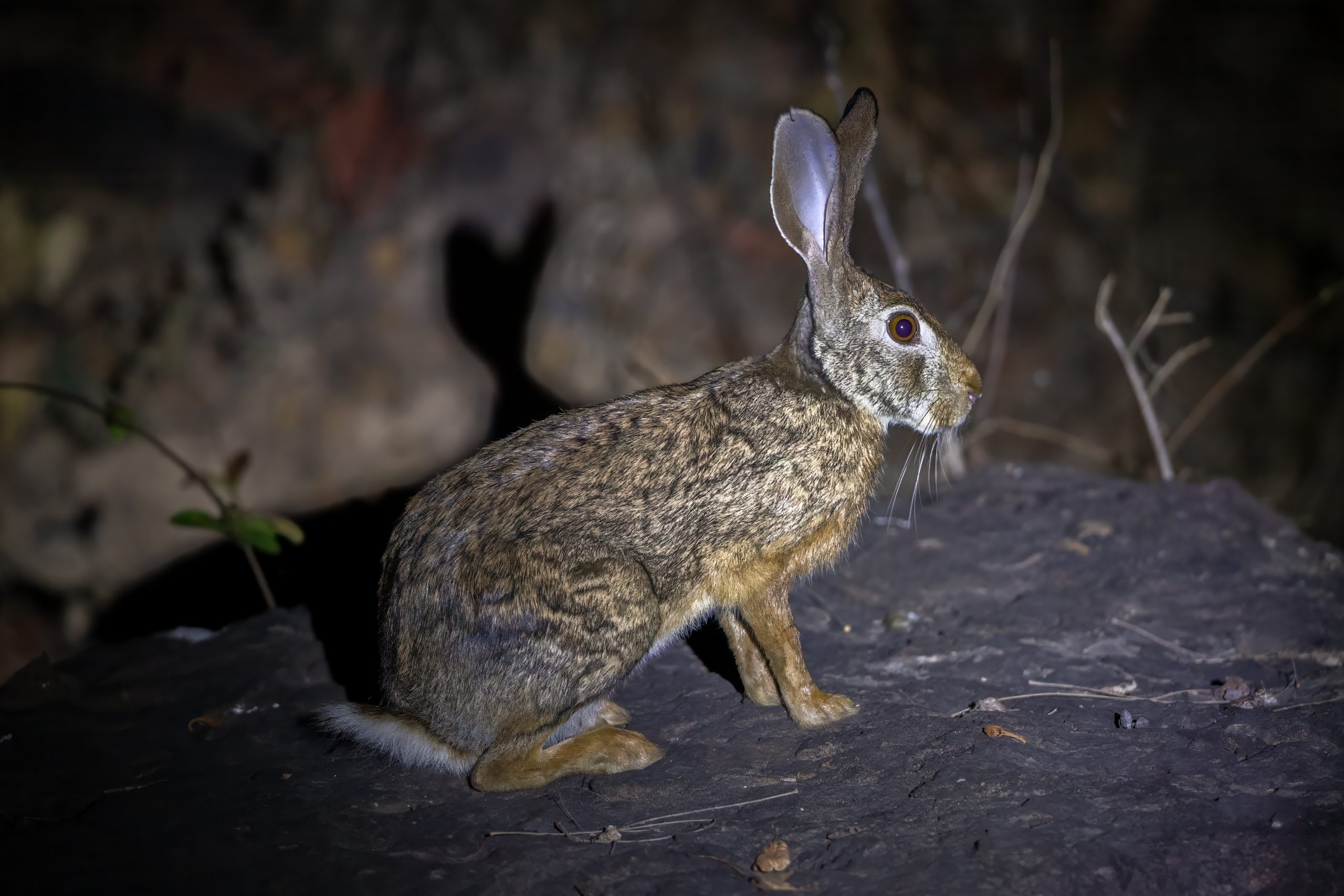Description
The European hare (Lepus europaeus), also known as brown hare, is a species native to Europe and parts of Asia, found in diverse habitats from open fields and agricultural lands to woodlands. This species is characterized by its large size, with adults typically weighing between 3 to 5 kg (7-11 lbs) and measuring about 60 to 70 cm (24-28 in) in length, including their long hind legs and ears. Their fur is a tawny-brown with a white underbelly, providing effective camouflage in their environments. Unlike the mountain hare (Lepus timidus), which has a white coat during winter and is generally smaller with shorter ears, the European hare retains its brown coloration year-round and has longer ears.
Diet & habitat
Their habitats range from temperate grasslands and agricultural fields to open woodlands and shrublands. They prefer environments with plenty of cover to hide from predators and access to ample food sources. European hares are primarily herbivorous, feeding on a wide variety of vegetation including grasses, herbs, twigs, buds, and bark. They are particularly adept at feeding on agricultural crops, which can sometimes bring them into conflict with farmers. The hares typically feed during the night, relying on their excellent sense of smell to locate food.
Behavior
European hares are known for their solitary and elusive nature, but during the breeding season, they can be seen engaging in a behavior known as “boxing,” where females fend off males or rival males compete for dominance. This species is crepuscular, being most active at dawn and dusk. They rely on their speed and agility to escape predators, capable of running at speeds up to 70 kilometers per hour (43 mph). Hares communicate through a series of thumping signals with their hind legs and have a wide field of vision due to their large eyes positioned on the sides of their heads.
Reproduction
The breeding season of the European hare lasts from January to August, with peak activity occurring in the spring. Females can produce several litters each year, with each litter containing one to four young. The gestation period is approximately 42 days. Unlike many other mammals, young hares are born fully furred and with their eyes open, allowing them to be relatively independent shortly after birth. Females often nurse their young only once a day, leaving them hidden in forms (shallow depressions in the ground) to avoid attracting predators. The life expectancy of a European hare in the wild is typically around 3 to 4 years, though they can live longer in captivity.
Introduced populations
European hares have been introduced to several regions outside their native range, including Australia, New Zealand, North and South America, and parts of Africa. Even though it is close to its native range, the British and Swedish populations are also introduced. These introductions were often intended to provide game for hunting or to help control vegetation. However, in many cases, the hares have become invasive, outcompeting native species for resources and altering local ecosystems. For example, in Australia, the European hare competes with native marsupials for food and habitat, contributing to the decline of some native species.
Status
The European hare is currently listed as least concern on the IUCN Red List, although some populations are declining due to habitat loss, agricultural practices, and hunting pressure. In certain regions, conservation efforts are focused on maintaining sustainable populations and preserving their natural habitats. Additionally, they are sometimes considered pests in agricultural areas due to their feeding habits.





